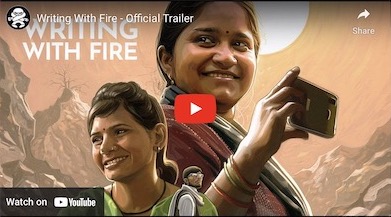The Nine Per Cent
By Stan ThekaekaraAn incisive account of adivasi survival, from colonial risings to contemporary insurgencies
IS IT an anthropological study by an academic, a textbook by a historian, a political polemic by an activist or a novel? Shashank Kela’s A Rogue and Peasant Slave is all of this and more. In his preface, Kela states that the book is written more “like a novel than an academic work,” while the structure may be novelistic, the style and content are certainly not. The erudition, painstaking research and disciplined analysis leap out on every page. Kela combines the passion of an activist with the discipline of an academic to present a unique volume that not only documents the resistance of adivasis to all attempts to colonise them but also gives us a clinical but insightful analysis of the politics of adaptation and social change.
The ironic title borrowed from Hamlet’s famous soliloquy (“Oh, What a rogue and peasant slave am I!”) captures at once the non-tribal view of adivasi society — rogues, bandits and criminals, peasants at the bottommost rung of society, or slaves and bonded labourers free to be exploited as one wills. Cataloguing a history of 200 years of adivasi resistance, especially of the Bhils in five districts of western Madhya Pradesh, referred to as Nimar, Kela repeatedly challenges this view. Unlike the literature on dalits, most studies of adivasi society tend to focus on their culture (the more exotic the better) and very little is available on the economy and politics of this much maligned and marginalised nine per cent of India. […]
A Rogue and Peasant Slave fills a gaping hole in the literature on adivasis by examining the effect of changing economies and political structures on the culture and lives of the adivasis. […]
Kela challenges the emerging but current opinion of revisionist anthropologists, like Sumit Guha and Ajay Skaria, that adivasis are not distinctive and have adapted through choice, by arguing that “adaptation involves protest and endurance as well as assent”. […]
The book’s structure frees the author from the narrow confines of academic writing and especially in the second part, we are treated to Kela’s storytelling skills. While the first part is the product of painstaking research, the second draws heavily from the author’s personal journey among the Bhils of Madhya Pradesh and his understanding of politics of adivasis across the country. If the first part was a journey in time, the second is a journey through geography and communities. Touching on struggles of the Adivasi Gothra Mahasabha in Wayanad, Kerala, to that of the National Socialist Council of Nagaland, Kela chronicles post-Independence struggles and analyses the different approaches and their impact. This, coupled with an in-depth analysis of the approach of the modern Indian state results in a unique and insightful political commentary. […]
Currently a drama is being played out with two contradictory approaches of the Indian state. On the one hand, the enactment of the Forest Rights Act seeks to give tribal gram sabhas control over their forest resources. On the other, there is the push for the extraction of coal and other minerals (nearly all of which are in adivasi forest areas) in the name of development and economic growth — read global capital. […]
The writer co-founded ACCORD in the ’70s, which fights for the rights of indigenous people in south India
Source: Stan Thekaekara, Indian Express, 5 January 2013
Address : http://epaper.indianexpress.com/80099/Indian-Express/05-January-2013#page/21/2
Date Visited: Sat Apr 06 2013 19:25:32 GMT+0200 (CEST)
Learn more about ACCORD – Action for Community Organisation, Rehabilitation and Development >>
[Bold typeface added above for emphasis]
See also
Adverse inclusion | Casteism | Rural poverty
Demographic Status of Scheduled Tribe Population of India (Census figures 2011)
Fact checking | Figures, census and other statistics
Human Rights Commission (posts) | www.nhrc.nic.in (Government of India)
Search tips | Names of tribal communities, regions and states of India
“What is the Forest Rights Act about?” – Campaign for Survival and Dignity
“Who are Scheduled Tribes?” – Government of India (National Commission for Scheduled Tribes, NCST)
Find scholarly books, poetry and fiction relating to tribal culture – Indian publishers
List of sites covered by this Google custom search engine
To find children’s and educational books or search Indian periodicals, magazines, web portals and other sources safely, click here >>
Search tips
Combine the name of any particular state, language or region with that of any tribal (Adivasi) community.
Add keywords of special interest (health, nutrition endangered language, illegal mining, sacred grove); learn about the rights of Scheduled Tribes such as the “Forest Rights Act” (FRA); and the United Nations “Declaration on the Rights of Indigenous Peoples”, “Universal Declaration of Human Rights”, “women’s rights”, or “children’s right to education”.
Specify any other issue or news item you want to learn more about (biodiversity, bonded labour and human trafficking, climate change, ecology, economic development, ethnobotany, ethnomedicine, global warming, Himalayan tribe, hunter-gatherers in a particular region or state, prevention of rural poverty, water access).
For official figures include “scheduled tribe ST” along with a union state or region: e.g. “Chhattisgarh ST community”, “Scheduled tribe Tamil Nadu census”, “ST Kerala census”, “Particularly Vulnerable Tribal Group Jharkhand”, “PVTG Rajasthan”, “Adivasi ST Kerala”, “Adibasi ST West Bengal” etc.
In case the Google Custom Search window is not displayed here try the following: (1) toggle between “Reader” and regular viewing; (2) in your browser’s Security settings select “Enable JavaScript” | More tips >>

Uttar Pradesh & Madhya Pradesh >>
Learn more
Crafts and visual arts | Fashion and design | Masks
eBooks, eJournals & reports | eLearning
eBook | Background guide for education
Forest dwellers in early India – myths and ecology in historical perspective
Himalayan region: Biodiversity & Water
History | Hunter-gatherers | Indus Valley | Megalithic culture | Rock art
Languages and linguistic heritage
Modernity | Revival of traditions
Tribal Research and Training Institutes with Ethnographic museums
